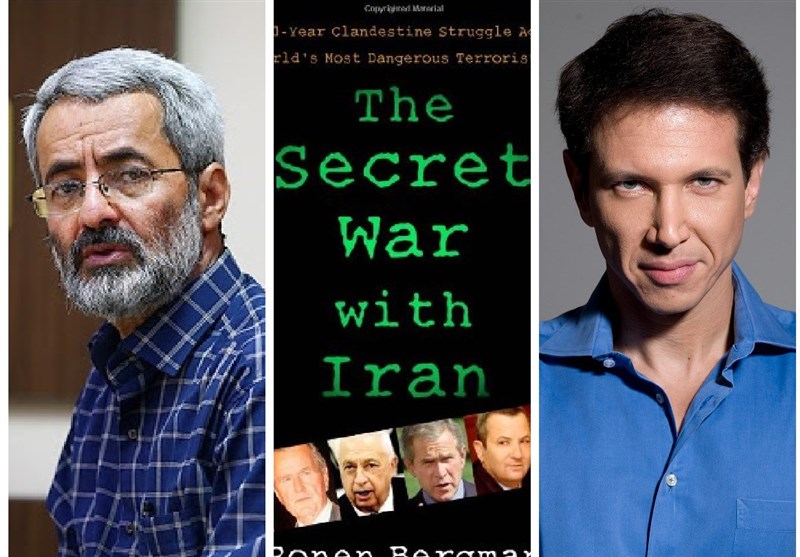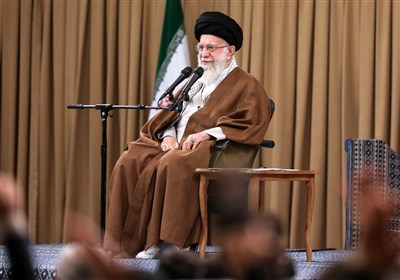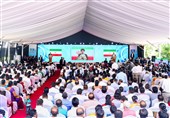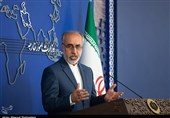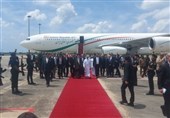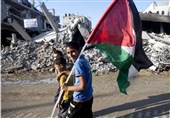An Argument against Ronen Bergman’s 'The Secret War with Iran' – 25
TEHRAN (Tasnim) – Before the occupation of Lebanon by the Zionists, two factors had caused a rift between PLO fighters and residents of south Lebanon: the Arafat-led group distanced themselves from Islamic principles; second, they were corrupted by petrodollars granted by Arab sheikhs.
Iranian journalist and expert Abbas Salimi Namin has disproved the claims and opinions of Israeli analyst Ronen Bergman in the book ‘The Secret War with Iran’. ‘The Secret War with Iran’, written by renowned Zionist journalist Ronen Bergman, was published in 2008 by Simon & Schuster publishing company in the United States.
Born in 1972, Bergman is a graduate of Tel Aviv University in the Middle East political relations. He is a famous Zionist journalist and analyst in the military and security fields who has worked with Israeli newspapers ‘Haaretz’ and ‘Yedioth Ahronoth’, American dailies and weeklies such as ‘The New York Times’, ‘Newsweek’, ‘The Wall street Journal’, and British media groups including ‘The Guardian’ and ‘The Times’.
Bergman has been interested in topics relating to the enemies of the Zionist regime (particularly Iran, Hezbollah and the Palestinian resistance groups), as well as subjects on the history of the Israeli regime’s assassination operations, which are cited in his recent book ‘Rise and Kill First’.
In an interview with Persian TV channel ‘Iran International’, Bergman has pointed to the Iranian nuclear program and the issues surrounding it -particularly the Zionist regime’s secret attempts to halt the process of nuclear activities in Iran and assassinate Iranian scientists. He has also cited ex-CIA chief Michael Hayden as saying that the assassination of nuclear scientists is the best way to impede Iran’s growing process in that field, and has implicitly held Israel responsible for it.
In the book ‘The Secret War with Iran’, Bergman has written a history of encounters between Iran and the Zionist regime, while the bulk of the book relates to the Lebanese Hezbollah -Iran’s main ally in the battle against the Zionist regime since its formation until the 33-day War- focusing on the role of Martyr Imad Mughniyeh.
His book also includes sections about the final years of the Pahlavi regime and victory of the Islamic Revolution in Iran, short periods of the war imposed by the Ba’thist party of Iraq on Iran (focusing on the McFarlane affair), Iran’s role in supporting the Palestinian groups, and the Iranian nuclear program.
Bergman’s multiple undocumented and untrue comments as well as personal and purposeful analyses (with the main purpose of displaying Israel’s power, especially in a competition with the US) that have repeatedly come in his book make a critical review of the book necessary for Iranian readers.
Director of the Iran History Studies and Compilation Bureau, Abbas Salimi Namin, has written an extensive criticism in a book about ‘The Secret War with Iran’. Born in 1954, Salimi Namin is an experienced journalist and a renowned Iranian researcher in history and political sciences who has published many articles and books.
About ‘The Secret War with Iran’
Part 25:
Chapter VI
In Chapter 6, titled The Drugged Octopus and the Rise of Hezbollah, the author reviews the performance of eight Israeli intelligence services in Lebanon and the modalities of formation of popular resistance in the occupied nation. He first tries to cover up the “Drugged Octopus” scandal, but finally ends in showing his overt hostility. However, this data may be revealing in shedding light on ongoing developments in Lebanon during 18 years of Israeli occupation (1982-2000) with no more need for other references. Of course it does not mean that we can understand all realities by just relying on this data because what such works provide to readers are specifically purposeful and only portions of reality are expressed in a bid to win the audience confidence so that the final conclusion would be easily accepted. In other words, resorting to a critical theme is a tactic by the author to create the impression that he is impartial. It has to be noted that nations are not the only ones to protest the Zionist bases; rather, powers that have been spending billions of dollars annually to keep them afloat are closely watching the racist treatment meted out to Palestinians in the occupied territories. Therefore, producing such works financed by Israeli intelligence services would also be aimed at convincing supporters. For instance, Mr. Bergman reveals Washington’s doubts about the Zionists’ competence. “The American intelligence community was extremely worried about Israeli intelligence’s poor performance. In March 1990, at one of the periodic meetings that the director of the Mossad holds with his CIA counterpart, Shabtai Shavit heard disconcerting criticism from CIA director William H. Webster. The information coming from Israel about Hezbollah and the reports that Israel conveyed to Washington about its activities against the organization had created the impression that Israel had a serious problem on its hands, Shavit was told.” (Chapter 6, p. 109)
Therefore, the author cannot hide this flagrant weakness (which all intelligence agencies in pro-Zionist nations are aware of). He admits to some deviations in relevant organs on the one hand and acknowledges Hezbollah being different in terms of enjoying a popular base and organizational cleanness with a view to affecting his final judgment on the other. Regarding the intelligence weakness of his likes with regard to Hezbollah, Bergman puts it as follows: “One day, in fifty years’ time if at all, when the most secret files of the Israeli intelligence community are made public, historians will no doubt be amazed at the meagerness of Israel’s penetration of its mortal enemy, Hezbollah. The vaunted Israeli intelligence officers with reputations akin to James Bond’s will come to look more like a set of bumbling Inspector Clouseaus. Israeli intelligence’s failure to penetrate and secure information on Hezbollah in the 1980s and 1990s has been one of its worst shortcomings.” (Chapter 6, p. 99)
That specifies the author’s affiliation with intelligence services while indicating that the Zionist base is not solid-based. As noted, before the formation of popular resistance against this community, its challenges with the Arab world were being settled behind the scenes. Then double agents like Anwar Sadat in the Nasser government prepared the ground to portray the Zionists as invulnerable. But realities are revealed in the first confrontation between this power and a portion of the population of as small a country as Lebanon.
“From 1982 until 2000, Israel and Hezbollah clashed nearly every hour of every day in Lebanon. Of the 2,000-odd engagements between the guerrilla group and the Israeli army in 1998 alone, Hezbollah initiated 1,920—96 percent. Israel pulled out of Lebanon altogether in May 2000. Even after that, it remained on the defensive…The price for the almost total lack of intelligence information about Hezbollah’s activities was paid constantly by Israeli troops, with their lives. In contrast to the PLO of the pre-1982 era, which was hated by the local population, Hezbollah enjoyed and enjoys enormous support in the Shiite villages of South Lebanon as well as in the Syrian and Lebanese armies. Its fighters are seen as the vanguard of resistance to Israel, and not as terrorists, making it all the more difficult for Israel to insert or acquire agents within its ranks.” (Chapter 6, p. 100)
Before the occupation of Lebanon by the Zionists, two factors had caused a rift between PLO fighters and residents of south Lebanon: first, the Arafat-led group distanced themselves from Islamic principles; second, they were corrupted by petrodollars granted by Arab sheikhs and consequently they showed behaviors that did not please residents of south Lebanon. Under such circumstances, the Zionists had said they would destroy any village from which shots are fired at the occupied territories. They targeted defenseless villagers in this way in a bid to further highlight the conflict between residents of south Lebanon and Palestinians. However, Israeli intelligence reports show that even under such tough conditions, Shiites in south Lebanon never distanced themselves from the Palestinian cause. Of course, some cowards who had been intimidated during the Zionists’ violent treatment of Amal members have to be regarded as ineffective as they were only few. The important thing is that even these few people realized where the main threat directed at them originated from, shortly after the Zionists’ occupation of Lebanon.
“David Kubi arrived in Lebanon at the start of the war to serve briefly as the Shin Bet’s intelligence coordinator in Sidon and the Palestinian refugee camps in the vicinity. In 1984, he became commander of the Sidon sector. He laments what happened at that time. “In the beginning, we enjoyed a supportive attitude on the part of the bulk of the Shiites in the area, including members of Amal. More than once they approached us at their own initiative to inform us about Palestinian terrorists. But the longer our stay in Lebanon drew out, [the more] the majority of the Shiites began to hate us. I felt this especially on my return in 1984, when I understood from them that the prolonged occupation was significantly impinging on the fabric of their daily lives, having to pass through innumerable roadblocks and other humiliations. Throughout the southern region, we witnessed the beginnings of the popular resistance movement.” (Chapter 6, p. 102)
These remarks from a senior Israeli intelligence agent highlight several points: 1. The Lebanese people’s fury with the occupiers was not limited to checkpoints. Of course by mentioning instances of humiliation, he has kept mum about the crimes committed by the Zionists and their agents, i.e. the Phalange movement. Performances have been such that even the least politically-minded persons could not defend the occupiers and they even joined the Resistance to help bring an end to humiliation. 2. The majority of Shiites were never aligned with the Zionists, even before the occupation. Only a small group of cowards were seeking peaceful ties with the occupiers of Palestine. Otherwise, Israeli intelligence agencies would not adopt anti-Shiite policy in southern Lebanon in the wake of occupation. Bergman has quoted Gideon Ezra, who headed the organization’s operations in Lebanon and later served as a cabinet minister in a number of governments, as saying: “We decided to settle accounts with the Shiites for their connections with Fatah. We sort of forgot that the Shiites had not done it out of their own free will, but were threatened and pressured in various ways. Those aggressive, anti-Shia actions were unnecessary.” (Ibid) 3. The southern Shias’ hatred of the Zionists pertains to only the second year of occupation of their nation. Over the next 16 years, the crimes became wider from day to day as all Shias had wholeheartedly joined the Resistance to tighten the noose around the occupiers, who in turn resorted to more violence. The author has sought to exonerate his likes: “The conduct of Shiite prisoners under questioning—whether by Israelis, who were restricted from 1999 on by a High Court ruling against torture, or by SLA interrogators, who used brutal methods—was also very different from that of Palestinians. Their ability to withstand physical pressure was matched by their profound grasp of Israel’s methods.” (Chapter 6, p. 111)
Bergman refers to the Israeli High Court’s ruling banning torture in Lebanon in the final year of its occupation on the one hand and writes ambiguously about the Lebanese people’s resistance against torture that pushed torturers to intensify their inhumane act (an example has come in upcoming chapters) on the other in a bid to play down the Zionist crimes aimed at breaking the Lebanese nation’s resistance to dominance. Otherwise, banning torture after 18 years would mean scandalous extremism per se. Therefore, humiliation of the occupied Lebanese nation was not limited to checkpoints. But the reason for the Lebanese nation being more effective than Fatah in their resistance stemmed from their beliefs. Even in Palestine, after people turned to such groups as Hamas and Islamic Jihad, resistance in occupied territories took a new form, imposing more humiliating defeats on the Zionists.
